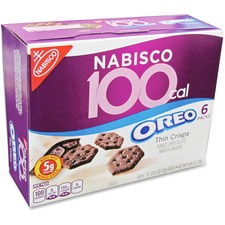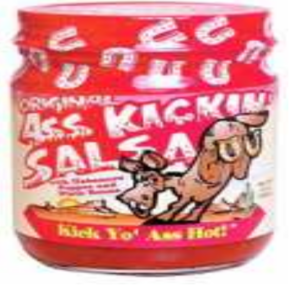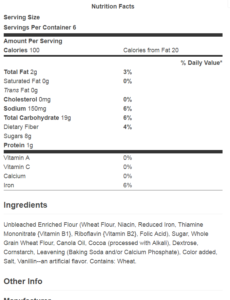Every year we assist thousands of companies who are new to UPC identification and barcoding. In most cases these companies are reaching out to us because they know they need to include UPCs on their products but do not really know what that entails or why proper UPC identification is so important. Our professional support staff is well versed in explaining the process of product identification and asking questions to help clarify the steps required for UPC barcoding.
Steve Job once said, “It’s not the customer’s job to know what they want”. This statement rings true when it comes to barcode identification and corresponding product data. Companies know their product and its value to a customer better than anyone, but a customer can only act on what is presented to them. Companies who are new to UPC barcoding seldom have an appreciation for the relationship between product identification and content. This blog article will why it is important for brand owners to control their product content.
Product barcode symbols, such as a UPC barcode, simply encode the numeric digits of the UPC (GTIN-12). The actual corresponding product and pricing data resides in the databases of their respective retailer trading partners. Years ago, manufacturers would have to either fax or send their retail clients detailed product lists indexed by the UPC number (GTIN-12) to each of their clients. Aside from being terribly redundant, the manual nature of this process resulted in errors and extra costs. Today there are product catalog type services which enable manufacturers to posts their product information to a central repository that retail trading partners can tie into. Online marketplaces like Amazon create portals and data templates to make this process easier for suppliers.
Due to the ever-growing reliance on online product searches, the need for accurate trusted product data is equally important for display online. Recent studies have shown that 26% of online product returns are result of inaccurate product descriptions. In addition, manufacturers need to have control of their products’ images since they are a direct reflection of their brand. Google and many other engines have factored in UPC/GTIN data structures into their search algorithms so the display results provided by entering a particular UPC will yield the appropriate products.
Example1: The UPC for Southwest Specialty Foods’ Ass Kickin’ Original Salsa (13oz.) is 089382112303. Take a look at how this product is represented visually different online from a simple Google search.
Company Website SalsaExpress.com



Example 2: The UPC for Mondelez Int. Nabisco brand Oreo Thin Crisps 100 Calorie Packs, 6 ct is 044000006174. Two major online shops have different product images for this product.


The pictures below depict differences in nutritional panel information:
Amazon.com Shoprite.com (no mention of potassium)
How does this happen?
There are different types of product data repositories. While a few online marketplaces and 3rd party database services use content provided directly by brand owners, a majority of the internet product databases either rely on “crowd entered” data or automated web scraping.
Crowd entered data is similar to information entered on a wiki. Users around the globe voluntarily provide information and occasionally images of actual products. As you can guess, this process pollutes and diminishes the accuracy of the data a brand owner hopes to convey for their products. Web scraping is a relatively newer practice where bots automatically scour the internet for product data associated with a UPC (GTIN) and aggregate its finding in a lookup. These types of websites do not functionally validate between brand owner entered data versus crowd. Web scraping services typically provide services to other web and mobile developers so their applications can pull up product data from a UPC barcode scan. Consequently, these new applications are unaware they are conveying information not necessarily provided by the brand owner. In essence, this is like the old “telephone game” were information is constantly altered as it moves from one person to the next.
“An ounce of prevention is worth a pound of cure” – Benjamin Franklin
Brand owners need to take a proactive approach towards managing their product content to defend against potential future problems. Fortunately, this issue has been identified by both Google and Amazon and they have each created solutions to empower brand owners.
Amazon Brand Registry – Amazon offers an internal program to enable manufacturers to better control/influence the titles, detail and images on their detail pages. The program is only open to bonafide manufacturers and brand owners. An additional key benefit for applying to this program is that it simplifies the process of removing fraudulent and counterfeit sellers.
Google Manufacturers Center – Tool ensuring manufacturers that their products are listed correctly on Google Search, Google Shopping, and other Google Services. The Manufacturers Center is Google’s repository for accurate and reliable product data. When someone searches for a specific product on Google, the manufacturer is empowered to control the authoritative product description which gets displayed.
GS1 Company Database (GEPIR) – GS1 is the global standards organization for item and logistic identification. The GEPIR tool can be used to validate UPC barcode ownership by the GS1 Company Prefix. Each country has their own local office and GS1 US is the US organization. GS1 US offers their members an online tool called Data Hub to store their assigned GTINs and product information. Rather than managing this data in a local spreadsheet on a computer, this tool enables members to keep it on the GS1 US portal. Please note this tool also can provide web based barcode files (.png) for online and proofing display. GS1 US members are encouraged to keep their information current with their local GS1 office. Please visit https://gepir.gs1.org/search-by-gtin to view UPC ownership information.
Due to the demands of the top retailers and online marketplaces, larger manufacturers are required to invest time and money on product data management for 3rd party catalogues and retailer portals. As illustrated by the above examples, a continued effort of maintaining that data is needed after it is originally entered. New and smaller manufacturers should make product data and image management a priority from the outset to reduce future efforts of correcting inaccurate information.
As the leader in product identification and barcode origination, Bar Code Graphics assists thousands of companies every year. Included with our GS1 Barcode Service is UPC management and product data content assistance. Our certified consultants validate our clients’ provided product data for accuracy and can also assist with uploading data files to global product data registries.
Note: Although we assist with the management of product content and storage of digital images, we believe our clients would be best served trusting their digital photography needs to specialized professionals. Please visit www.powproductphotography.com for your product photography needs.








Comments are closed.